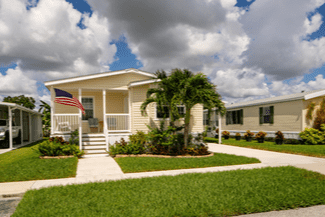Manufactured Housing Demand Remains High Amid Inflationary Concerns
In fact, as inflation continues to push expenses higher, more households may consider this housing option.
Demand for manufactured housing remains strong in the post-pandemic US, particularly as construction pipelines for the sector continue to be limited and the number of Americans over 55 increase.

Analysts don’t appear threatened by recent and planned Fed rate hikes, however, noting that demand remains high. Increased lending costs are unlikely to significantly impact manufactured housing buyer activity over the second half of this year, according to Marcus & Millichap’s senior market analyst Cody Young.
“Although cap rates are lower now than they were when the Fed last began hiking interest rates in 2015, sufficient margin remains to drive deals forward, especially as listings are limited,” Young writes in a new report on the sector. “The development of brand-new communities continues to lag housing demand, leading to less influx of fresh supply for investors. Instead, many existing properties are looking to expand by acquiring and developing adjacent land.”
That’s precisely what larger investors with the means to source plots from various private landowners are doing, Young says. Institutional capital is also flocking to the space, and such players accounted for 23% of volume in the past two years, according to data from Real Capital Analytics.
“Recent jumps in consumer prices, together with long-term demographic trends, warrant the supply increases and draws capital into the sector,” Young notes. “Nevertheless, some long-time investors may be interested in repositioning their portfolios after notable price appreciation, creating opportunities for more recent entrants into the space.”
Rents at manufactured home communities ranged from an average of $457 in the Midwest to a mean of $840 in the West last year, both figures Young says are well below the average monthly payment for an apartment or mortgage.
“As inflation continues to push expenses higher, more households may consider manufactured homes,” Young says.
Source: GlobeSt.















 Accessibility
Accessibility